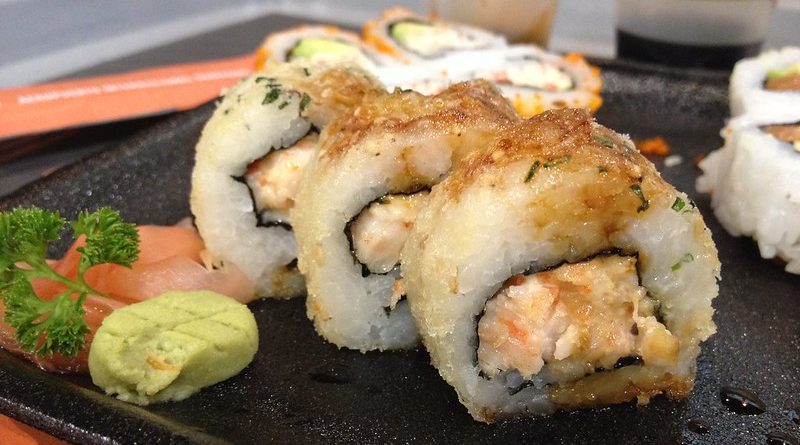Sticky Fingers: Get Stuck on Sushi
Food Facts
Where: Japanese speciality with worldwide appeal
Ingredients: Sticky rice, sweet vinegar, raw fish & sea weed
Taste: sweet, sticky and balance of sharp and cleansing flavours
Best enjoyed: for its variety, nutritional benefits and sense of fun
Although Japanese food is a great deal more varied than most westerners believe, sushi is widely considered to be virtually synonymous with the Japanese eating experience. Most people associate sushi with raw fish, but although this is a popular ingredient, it’s not the most important element and some kinds of sushi actually contain no fish at all. The essential ingredient in every type of sushi is sticky rice, seasoned with sweet vinegar.
In the last decade sushi bars have sprung up in cities all around the world, and even takeaway mini sushi dishes from major supermarkets, so many people are familiar with the concept before they even go to Japan. Even so, it’s unlikely you’ll have tasted quite such exquisite sushi outside the country of its origin.
Origins and History
Since the 7th century, the Japanese have preserved their fish with salt and rice, pressing it into compact layers to ferment it. The technique actually originated in China, and in the days before refrigerators this was obviously a smart plan to stop your fish becoming too stinky.
In the early 1800s a Japanese entrepreneur hit upon the idea of placing raw seafood on pads of rice. The invention was hailed as a new taste sensation across Japan, and thus modern sushi was born.
Sushi chefs undergo years of training in the art of making sushi, and when they graduate they are held in high esteem in culinary circles. Not only is a Sushi chef responsible for the taste and presentation of the dish, but they are actually involved in every aspect of the process – from haggling with the fisherman right through to chatting with the customer.
Serving Suggestion
Sushi is very low in fat and is a really healthy food. The fish is a great source of protein, vegetables provide a range of vitamins, seaweed is rich in iodine and rice is carbohydrate. Although sushi is traditionally finger food to accompany sake or beer, it can be a balanced meal in itself and is often enjoyed as such.
There are two main types of sushi: Nigri-zushi (literally ‘hand shaped sushi’) are fingers of vinegared rice served with a slice of raw fish or other ingredients on top. Maki-zushi is seasoned rice and other ingredients (such as fish, cucumber, egg or mushrooms for example) wrapped up in seaweed. Both these types are served with strong, green horseradish, and are dipped in soy sauce before eating. Slivers of pickled ginger are always provided to cleanse the palate between mouthfuls.
If chopsticks aren’t your forte don’t panic – it’s perfectly acceptable to eat sushi with your fingers.
Modern sushi ‘joints’ tend to have a revolving table where you pick the dish you fancy as it spirals past and pay for your platters when you’ve had your fill.
More Information
stickyrice.com
Sushi enthusiast’s forum for swopping tips and tricks and learning more about sushi.
Books
The Sushi Cookbook : A Step-By-Step Guide to This Popular Japanese Food, Katsuji Yamamoto & Roger Hicks
The Essence of Japanese Cuisine : An Anthropological Essay into Food and Culture, Michael Ashkenazi
By Jess Halliday




